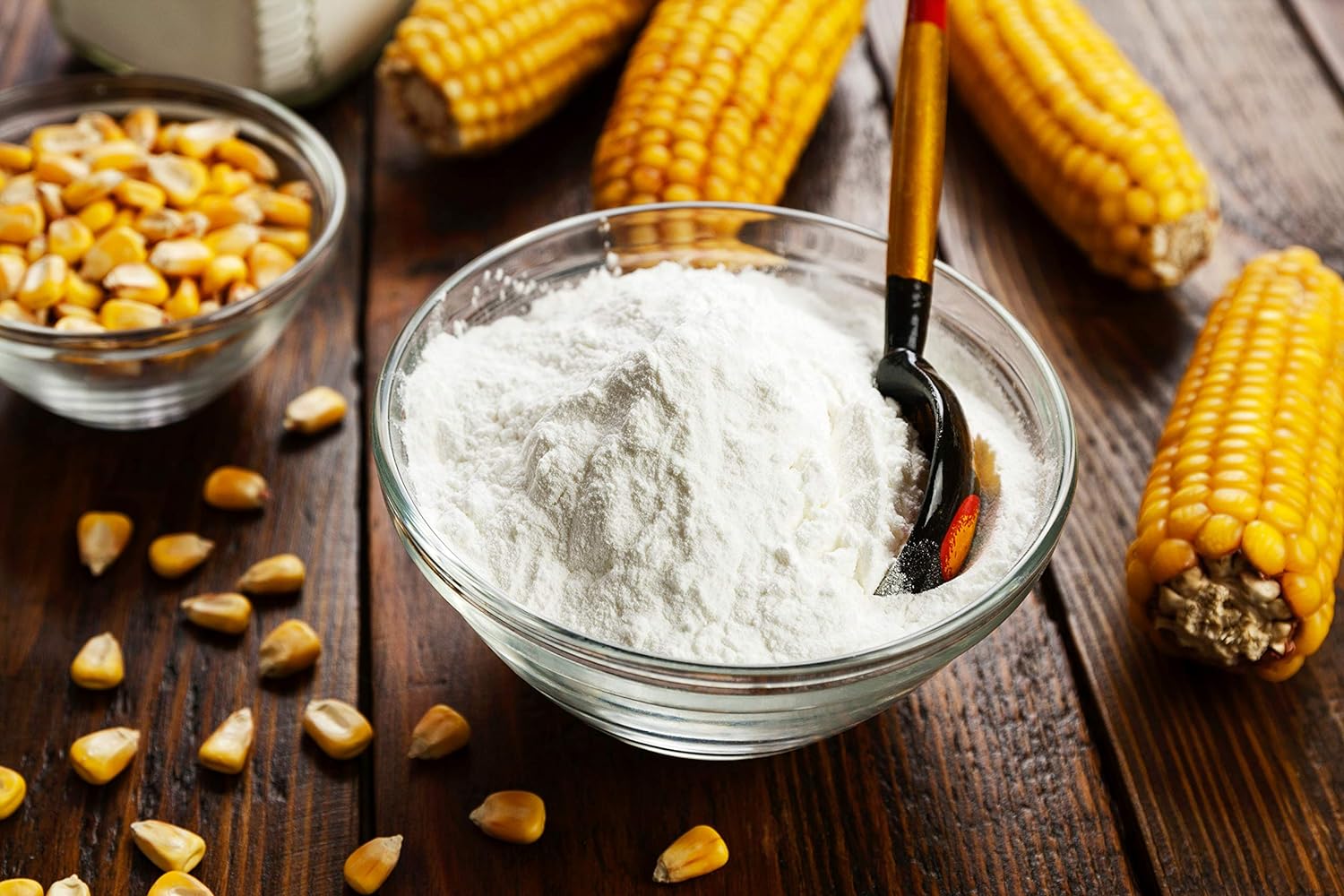Cornstarch and corn flour are two common pantry staples used in cooking and baking, but they have distinct characteristics and uses. In this comprehensive guide, we’ll explore the differences between cornstarch and corn flour, their respective properties, culinary applications, and how to use them effectively in various recipes. Whether you’re thickening sauces, baking bread, or coating fried foods, understanding the unique qualities of cornstarch and corn flour will help you achieve the best results in your culinary endeavors.
Cornstarch
Overview
Cornstarch, also known as corn flour in some regions, is a fine, powdery starch derived from the endosperm of corn kernels. It is commonly used as a thickening agent in cooking and baking due to its ability to absorb liquid and form a smooth, glossy texture.
Characteristics
- Texture: Fine and powdery, similar to talcum powder.
- Color: White or slightly off-white.
- Taste: Neutral flavor, with no discernible taste.
- Absorption: High absorbency, quickly thickens liquids when heated.
- Gelling Properties: Forms a clear, translucent gel when mixed with liquid and heated.
Culinary Uses
Thickening Agent
Cornstarch is primarily used to thicken sauces, gravies, soups, and stews. It is added to hot liquids and stirred until the desired consistency is achieved.
Baking
Cornstarch is often used in baking to create tender, light-textured cakes, cookies, and pastries. It can also be used as a dusting agent for rolling out dough or preventing sticking.
Coating and Binding
Cornstarch is commonly used as a coating for fried foods to create a crisp exterior. It can also be used as a binding agent in recipes such as meatballs and veggie burgers.
Storage
Store cornstarch in a cool, dry place away from moisture and heat.
Keep it in an airtight container to prevent clumping and maintain freshness.
Corn Flour
Overview
Corn flour, also known as maize flour, is a finely ground powder made from whole corn kernels. It is commonly used in both savory and sweet dishes and can vary in texture and color depending on the milling process and type of corn used.
Characteristics
- Texture: Fine, powdery texture, similar to wheat flour.
- Color: Can vary from white to yellow, depending on the type of corn used.
- Taste: Mild, slightly sweet flavor, with a hint of corniness.
- Absorption: Absorbs liquid more slowly than cornstarch but still contributes to thickening.
- Gelling Properties: Does not form a clear gel like cornstarch but can contribute to the texture of certain dishes.
Culinary Uses
Baking
Corn flour is commonly used in baking to add flavor and texture to bread, muffins, pancakes, and cornbread. It imparts a slightly sweet, corn-like flavor and a tender crumb.
Breading and Coating
Corn flour can be used as a coating for fried foods, similar to cornstarch. It creates a crisp exterior when fried and adds a subtle corn flavor.
Thickening
While not as effective as cornstarch, corn flour can be used as a thickening agent in recipes such as sauces, gravies, and custards. It may require a longer cooking time to reach the desired consistency.
Storage
- Store corn flour in a cool, dry place away from moisture and heat.
- Keep it in an airtight container to prevent it from absorbing moisture and developing a stale taste.
Cornstarch vs. Corn Flour Key Differences
Processing
Cornstarch
Derived from the endosperm of corn kernels and processed to remove protein and fiber, resulting in a fine, powdery texture.
Corn Flour
Made from whole corn kernels that are finely ground into a powder, retaining the entire kernel’s components, including protein and fiber.
Texture
Cornstarch
Fine and powdery, similar to talcum powder.
Corn Flour
Fine and powdery, similar to wheat flour.
Color
Cornstarch
White or slightly off-white.
Corn Flour
Can vary from white to yellow, depending on the type of corn used.
Taste
Cornstarch
Neutral flavor, with no discernible taste.
Corn Flour
Mild, slightly sweet flavor, with a hint of corniness.
Absorption and Thickening
Cornstarch
Absorbs liquid quickly and forms a clear, translucent gel when heated. It is an effective thickening agent for sauces, gravies, and soups.
Corn Flour
Absorbs liquid more slowly than cornstarch but still contributes to thickening. It is commonly used in baking to add flavor and texture to bread and other baked goods.
How to Use Cornstarch and Corn Flour in Recipes
Cornstarch
Use cornstarch as a thickening agent for sauces, gravies, and soups by mixing it with a small amount of cold liquid to form a slurry before adding it to hot liquids.
Use cornstarch in baking to create light, tender textures in cakes, cookies, and pastries. Substitute it for a portion of the flour called for in the recipe to achieve a softer crumb.
Corn Flour
Use corn flour in baking to add flavor and texture to bread, muffins, pancakes, and cornbread. It can be used alone or in combination with other flours.
Use corn flour as a coating for fried foods to create a crisp, golden exterior. Dredge the food in seasoned corn flour before frying to achieve a crunchy texture.
FAQs About Cornstarch vs. Corn Flour
Can I substitute cornstarch for corn flour in recipes, and vice versa?
While cornstarch and corn flour have similar properties, they are not always interchangeable in recipes. Cornstarch is primarily used as a thickening agent, while corn flour is used for baking and coating. However, you can experiment with substitutions, keeping in mind that the texture and flavor may vary.
Are cornstarch and corn flour gluten-free?
Yes, both cornstarch and corn flour are naturally gluten-free, making them suitable for individuals with gluten sensitivities or celiac disease.
Can I use cornstarch or corn flour to thicken gravies and sauces?
Yes, both cornstarch and corn flour can be used to thicken gravies and sauces. Cornstarch is more effective at thickening and creates a clear, translucent texture, while corn flour adds flavor and contributes to the overall texture of the dish.
Are there any health benefits associated with cornstarch and corn flour?
While cornstarch and corn flour are primarily used as cooking and baking ingredients, they do provide some nutritional benefits. Cornstarch is a source of carbohydrates and energy, while corn flour contains small amounts of fiber, protein, vitamins, and minerals.
Can I use cornstarch or corn flour as a substitute for other thickeners like flour or arrowroot powder?
Yes, both cornstarch and corn flour can be used as substitutes for other thickeners like flour or arrowroot powder in recipes. However, it’s essential to adjust the quantity based on the recipe’s requirements and desired consistency.
Are there any alternatives to cornstarch and corn flour for thickening sauces and gravies?
Yes, there are several alternatives to cornstarch and corn flour for thickening sauces and gravies, including arrowroot powder, tapioca starch, potato starch, and rice flour. These alternatives offer different textures and flavor profiles, so you may need to experiment to find the best option for your recipe.
Can cornstarch and corn flour be used in gluten-free baking?
Yes, both cornstarch and corn flour are commonly used in gluten-free baking to add texture and structure to baked goods. They are often used in combination with other gluten-free flours and starches to achieve the desired results.
Conclusion
While cornstarch and corn flour are both derived from corn and share some similarities, they have distinct characteristics and culinary applications. Cornstarch is primarily used as a thickening agent in cooking and baking, while corn flour is commonly used in baking and as a coating for fried foods. Understanding the differences between cornstarch and corn flour, as well as how to use them effectively in recipes, will help you achieve the best results in your culinary endeavors. Whether you’re thickening sauces, baking bread, or frying chicken, incorporating cornstarch and corn flour into your cooking repertoire will enhance the flavor, texture, and overall appeal of your dishes.
ChatGPT can make mista
- 13 Ways That Sugary Soda Is Bad for Your Health - April 19, 2024
- Cornstarch vs. Corn Flour: Whatthe Difference? - April 19, 2024
- Which is Better: Wild Salmon or Farmed Salmon? - April 19, 2024

